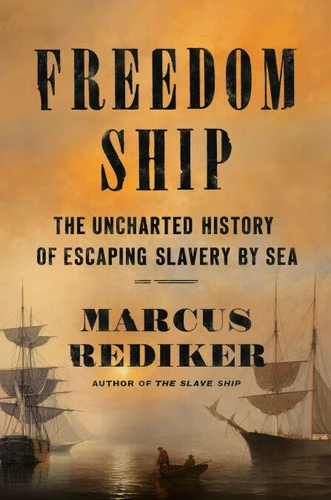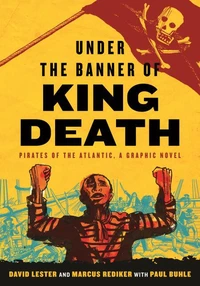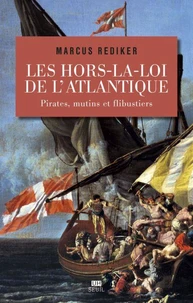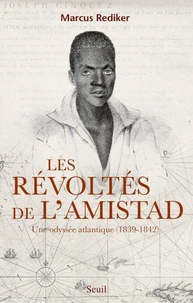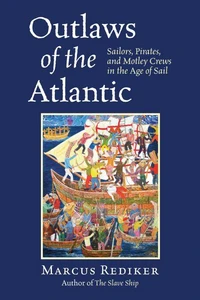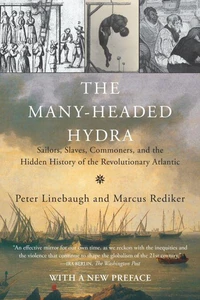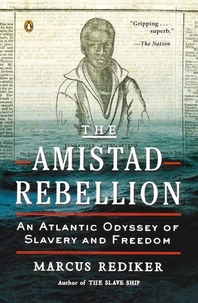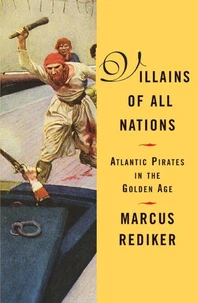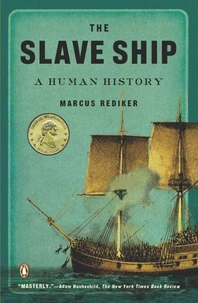Freedom Ship. The Uncharted History of Escaping Slavery by Sea
Par :Formats :
Disponible dans votre compte client Decitre ou Furet du Nord dès validation de votre commande. Le format ePub protégé est :
- Compatible avec une lecture sur My Vivlio (smartphone, tablette, ordinateur)
- Compatible avec une lecture sur liseuses Vivlio
- Pour les liseuses autres que Vivlio, vous devez utiliser le logiciel Adobe Digital Edition. Non compatible avec la lecture sur les liseuses Kindle, Remarkable et Sony
- Non compatible avec un achat hors France métropolitaine
 , qui est-ce ?
, qui est-ce ?Notre partenaire de plateforme de lecture numérique où vous retrouverez l'ensemble de vos ebooks gratuitement
Pour en savoir plus sur nos ebooks, consultez notre aide en ligne ici
- Nombre de pages416
- FormatePub
- ISBN978-0-525-55835-4
- EAN9780525558354
- Date de parution13/05/2025
- Protection num.Adobe DRM
- Taille53 Mo
- Infos supplémentairesepub
- ÉditeurViking
Résumé
A definitive, sweeping account of the Underground Railroad's long-overlooked maritime origins, from a pre-eminent scholar of Atlantic history and the award-winning author of The Slave Ship As many as 100, 000 enslaved people fled successfully from the horrors of bondage in the antebellum South, finding safe harbor along a network of passageways across North America now known as the Underground Railroad.
Yet imagery of fugitives ushered clandestinely from safe house to safe house fails to capture the full breadth of these harrowing journeys: many escapes took place not by land but by sea. Deeply researched and grippingly told, Freedom Ship offers a groundbreaking new look into the secret world of stowaways and the vessels that carried them to freedom across the North and into Canada. Sprawling through the intricate riverways of the Carolinas to the banks of the Chesapeake Bay to Boston's harbors, these tales illuminate the little-known stories of freedom seekers who turned their sights to the sea-among them the legendary abolitionist Frederick Douglass and Harriet Tubman, one of the Underground Railroad's most famous architects.
Marcus Rediker, one of the leading scholars of maritime history, puts his command of archival research on full display in this luminous portrait of the Atlantic waterfront as a place of conspiracy, mutiny, and liberation. Freedom Ship is essential reading for anyone looking to understand the complete story of one of North America's most significant historical moments.
Yet imagery of fugitives ushered clandestinely from safe house to safe house fails to capture the full breadth of these harrowing journeys: many escapes took place not by land but by sea. Deeply researched and grippingly told, Freedom Ship offers a groundbreaking new look into the secret world of stowaways and the vessels that carried them to freedom across the North and into Canada. Sprawling through the intricate riverways of the Carolinas to the banks of the Chesapeake Bay to Boston's harbors, these tales illuminate the little-known stories of freedom seekers who turned their sights to the sea-among them the legendary abolitionist Frederick Douglass and Harriet Tubman, one of the Underground Railroad's most famous architects.
Marcus Rediker, one of the leading scholars of maritime history, puts his command of archival research on full display in this luminous portrait of the Atlantic waterfront as a place of conspiracy, mutiny, and liberation. Freedom Ship is essential reading for anyone looking to understand the complete story of one of North America's most significant historical moments.
A definitive, sweeping account of the Underground Railroad's long-overlooked maritime origins, from a pre-eminent scholar of Atlantic history and the award-winning author of The Slave Ship As many as 100, 000 enslaved people fled successfully from the horrors of bondage in the antebellum South, finding safe harbor along a network of passageways across North America now known as the Underground Railroad.
Yet imagery of fugitives ushered clandestinely from safe house to safe house fails to capture the full breadth of these harrowing journeys: many escapes took place not by land but by sea. Deeply researched and grippingly told, Freedom Ship offers a groundbreaking new look into the secret world of stowaways and the vessels that carried them to freedom across the North and into Canada. Sprawling through the intricate riverways of the Carolinas to the banks of the Chesapeake Bay to Boston's harbors, these tales illuminate the little-known stories of freedom seekers who turned their sights to the sea-among them the legendary abolitionist Frederick Douglass and Harriet Tubman, one of the Underground Railroad's most famous architects.
Marcus Rediker, one of the leading scholars of maritime history, puts his command of archival research on full display in this luminous portrait of the Atlantic waterfront as a place of conspiracy, mutiny, and liberation. Freedom Ship is essential reading for anyone looking to understand the complete story of one of North America's most significant historical moments.
Yet imagery of fugitives ushered clandestinely from safe house to safe house fails to capture the full breadth of these harrowing journeys: many escapes took place not by land but by sea. Deeply researched and grippingly told, Freedom Ship offers a groundbreaking new look into the secret world of stowaways and the vessels that carried them to freedom across the North and into Canada. Sprawling through the intricate riverways of the Carolinas to the banks of the Chesapeake Bay to Boston's harbors, these tales illuminate the little-known stories of freedom seekers who turned their sights to the sea-among them the legendary abolitionist Frederick Douglass and Harriet Tubman, one of the Underground Railroad's most famous architects.
Marcus Rediker, one of the leading scholars of maritime history, puts his command of archival research on full display in this luminous portrait of the Atlantic waterfront as a place of conspiracy, mutiny, and liberation. Freedom Ship is essential reading for anyone looking to understand the complete story of one of North America's most significant historical moments.

